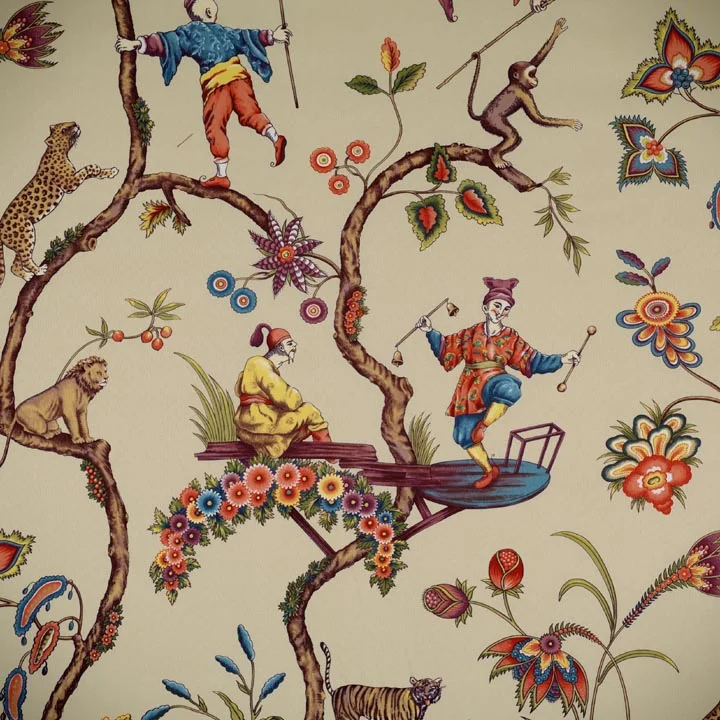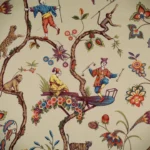WALLPAPER INSPIRED BY THE CHINESE CIRCUS
Greek culture was characterized by its predilection for naming all things, particularly, the word “circus” was invented to refer to all kinds of presentations intended for popular entertainment and suitable for the whole family. On the other hand, for the Romans, the circus was the space for public games such as gladiator fights, naval battles, horse-drawn cart competitions, where blood was the protagonist. For their part, the indigenous peoples of the New World surprised the Europeans, when they discovered among their common practices, acrobatics, foot juggling and ball manipulation, among other practices.
It can be said that the circus is in the DNA of humanity, since it evokes that part of us that always wants to have fun and at the same time exalts the people who dedicate their lives to performing stunts that in many cases put their own lives at risk.

It is not possible to talk about circus without mentioning Chinese culture, who not only invented gunpowder, silk, and paper, but also developed a unique circus.
The Chinese circus is a form of entertainment that combines acrobatics, juggling, balancing, and other numbers that fuse the performers’ physical skill with elements of traditional Chinese culture. It is often performed in a live tent or circus and the performers often wear colorful and bold costumes to complement their performances.


Some of the most common acts in the Chinese circus include bicycle stunts, torch juggling, chair balancing, and balancing games with clubs and hoops. The performers also often use traditional objects such as diabolos, yo-yos, and flags to perform their numbers.

The origins of the Chinese representation arts have been lost in history, although it is known that around the year 3,000 BC, in China, Mongolia and India there were already jugglers, acrobats and contortionists, it is also known that during the reign of In the Qin Dynasty (221-207 BC), Jiaodi drama was very popular and consisted of a wide variety of acts such as wrestling, musical performances, dance, martial arts, juggling, and horse shows.
When it comes to interior design, Chinese circus-inspired wallpaper patterns and decor can be a fun and vibrant way to add a touch of color and cheer to any space. These prints often include images of jugglers, acrobats, clowns, and other circus performers, as well as elements of traditional Chinese culture, such as dragons, monkey devils, tigers, plants, and other symbols.
Chinese circus-inspired wallpaper can be a perfect choice for a child’s room or play space, as its vibrant energy and happy colors can be a constant source of inspiration and fun. However, it can also be a bold and original addition to any other space in the house, such as a living room, dining room or hallway.
In addition to its appearance, Chinese circus wallpaper is also often very versatile in terms of style and pattern. There is a wide range of prints available, from cartoon and abstract patterns to more realistic and detailed images of circus performers and animals. This means that there is a style to suit anyone’s taste, and it’s easy to find wallpaper that fits into a space’s existing décor.
Overall, Chinese circus-themed wallpaper patterns are a bright and fun way to add a splash of energy and color to any space. Whether you are looking for a children’s decoration or a unique touch to any other room in the house, Chinese circus wallpaper will always be an option worth considering.
Finally, we highlight that it is not easy to become a Chinese circus artist, the training system is very selective and those who wish to become artists will have to train from childhood to achieve their dream. We firmly believe that the success of any practice lies in the discipline and perseverance that is put into that activity, therefore, we believe that our team of professionals are artists who provide their services with the same care and dedication as Chinese circus artists.








